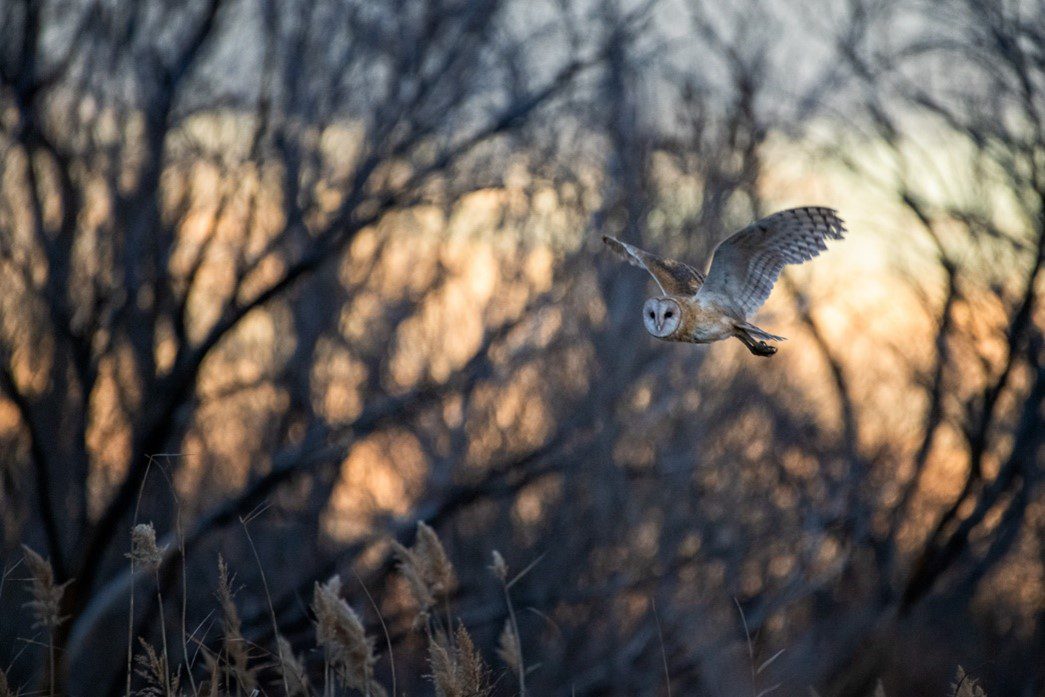The Barn Owl

WHICH RARE OWL WITH A “VALENTINE’S DAY” FACE MIGRATES THROUGH WETLANDS PARK?
Completely silent in flight and with almost unmatched hearing, the common barn owl (Tyto alba) is the terror of mice and other small mammals throughout its almost worldwide range. Its call is designed to carry and has been described as a “blood-curdling” shriek, often startling anyone within range on a moonlit nature ramble.
Barn owls have very distinctive heart-shaped faces, small dark eyes, slender 17-inch-tall bodies, and long legs. Typically, they are nocturnal, only seen in daylight if something startles them from a roosting place. They hunt in light levels so low that experiments with the birds in total darkness show they very efficiently locate and capture prey using their hearing alone. In fact, barn owls can hear footsteps of hidden mice on packed soil from 30 yards!
The outer openings of the owls’ keen ears are tucked beneath fine feathers in the large, heart-shaped facial disk. The right ear tilts up, and the left down, so that the right ear is more sensitive to sound from above, and the left to sound from below. The owl compares the sounds from both ears in a split second to locate the sound source on the ground below. Once it has a “sound fix” on dinner, the owl swoops down to strike its prey with both feet. If the first strike misses, it will often stay still and silent on the ground listening for its prey to move again, and attack.
Though barn owls are one of the most widely distributed terrestrial birds in the world, they are rare almost everywhere in their range, and their populations are declining. Their habitat has been greatly reduced by urban growth and intensive farming practices since the 1930’s. That said, people can help improve the barn owl’s chances of survival. In agricultural and urban settings, the owls live easily near humans, nesting in barns, church towers, and old buildings instead of the cavities in rocks and dead trees they favor in nature. In Europe, farmers often build small “owl doors” into barns and other outbuildings to invite the owls in. Some vineyard owners in California’s Wine Country have begun to provide nesting boxes with perfectly sized doors to encourage their barn owl pest-control squads to take residence.
A heart-faced barn owl is a rare treat to see – or hear! Please help encourage support for the habitat it needs.
Please enjoy these YouTube videos:
Introduction to the Barn Owl
www.youtube.com/watch?v=ohqEquNnzfU
Barn Owl flight
www.youtube.com/watch?v=Q9HVhqXI8PY
Barn Owls in Napa Valley California
www.youtube.com/watch?v=6uTZcdeXd8w
– By Chris Leavitt, President; photo by David Walker.
